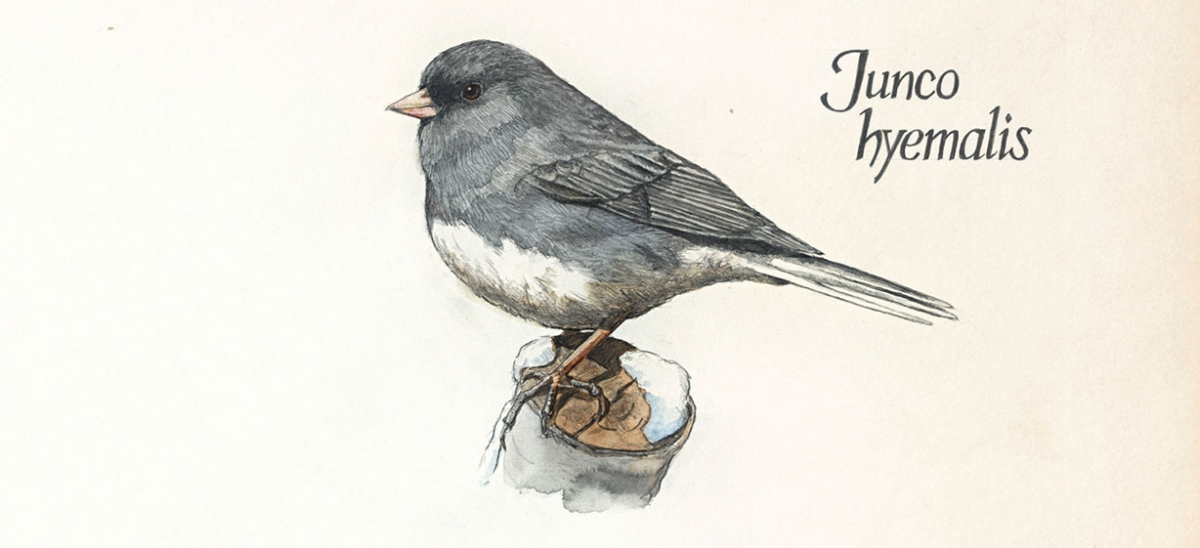
It may be funny to think of Pittsburgh in the same geographic thought as, say, Miami, but for dark-eyed juncos, which spend many months to our north, we’re all sand and sunsets.
Juncos “fly south to winter in our north, so making a sort of Florida of our best blizzards,” wrote Robert Francis, disciple of that more famous Robert F. of poetry, in his piece, “The Seed Eaters.”
Juncos are insect eaters all summer and survive the winter on grass and weed seed leftovers in Pittsburgh and environs as they fan out of Canada, the northern tier states, and the northern third of our commonwealth in search of forage. They’ll readily eat birdseed, too, and often can be seen in winter searching for a morsel beneath Pittsburgh feeders. Small beaks, fleshy pink to ivory in color in one common subspecies and bluish in another, are built to mash hard food. Junco beaks are great at cracking seeds into a high-energy mush, allowing these small birds to make it through the cold winter days and nights ahead.
Juncos are in the same scientific family as sparrows and are about the same size, but rather than being a “little brown job,” as the various sparrow species are referred to by novice birders, dark-eyed juncos are white on the bottom and slate gray on top with a dark eye, and thus easy to identify. Another helpful visual tag is its tail, gray on top, with white feathers at either edge. Appearing as a dirty snowball, they’re unlike any other bird in the region. (There are regional subspecies that are more or less tan or brown on top and flanks depending on geography. And there is another species of junco in southern Arizona that is yellow-eyed.)
Juncos are one of North America’s most numerous avian species, with a population of 260 million; Pennsylvania hosts some 380,000 males alone. Juncos can be found in diverse habitats, from Shadyside gardens to brush in the North Hills, from hemlock stands to our Allegheny forests. After winter, they disperse north again come spring to build nests on the ground, hidden under bent grass or just off the ground in a shrub or tree, but never up too high. Females are the nest builders and incubators and raise a brood or two each summer, some three to five fledglings each cycle.
Every year, I’m on the lookout to see when the first juncos arrive. It means winter is upon us, a time for a cup of Red Zinger tea and a good bird book. Besides your trusty field guide, allow me to recommend two books on birds for your winter perusal: “The Thing with Feathers,” by Noah Strycker, and “Ravens in Winter,” by Bernd Heinrich. The former is new, the latter an oldie but goodie. Either will help you pass through the dark days of winter with new found appreciation for our feathered so journers.


